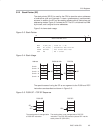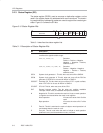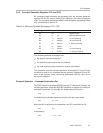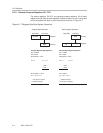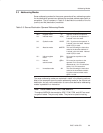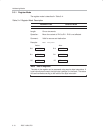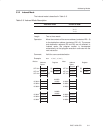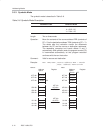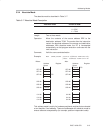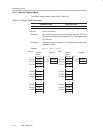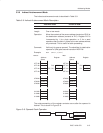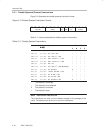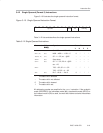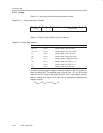
Addressing Modes
3-13
RISC 16-Bit CPU
3.3.4 Absolute Mode
The absolute mode is described in Table 3−7.
Table 3−7.Absolute Mode Description
Assembler Code Content of ROM
MOV &EDE,&TONI MOV X(0),Y(0)
X = EDE
Y = TONI
Length: Two or three words
Operation: Move the contents of the source address EDE to the
destination address TONI. The words after the instruction
contain the absolute address of the source and destination
addresses. With absolute mode, the PC is incremented
automatically so that program execution continues with the
next instruction.
Comment: Valid for source and destination
Example: MOV &EDE,&TONI ;Source address EDE=0F016h,
;dest. address TONI=01114h
01114h
Address
Space
0F016h
04292h PC
0FF16h
0FF14h
0FF12h
0xxxxh
0A123h
0F018h
0F016h
0F014h
0xxxxh
0xxxxh
01234h
01116h
01114h
01112h
0xxxxh
Register
Before:
01114h
Address
Space
0F016h
04292h
PC
0FF16h
0FF14h
0FF12h
0xxxxh
0A123h
0F018h
0F016h
0F014h
0xxxxh
0xxxxh
0A123h
01116h
01114h
01112h
0xxxxh
Register
After:
0xxxxh
This address mode is mainly for hardware peripheral modules that are located
at an absolute, fixed address. These are addressed with absolute mode to
ensure software transportability (for example, position-independent code).



